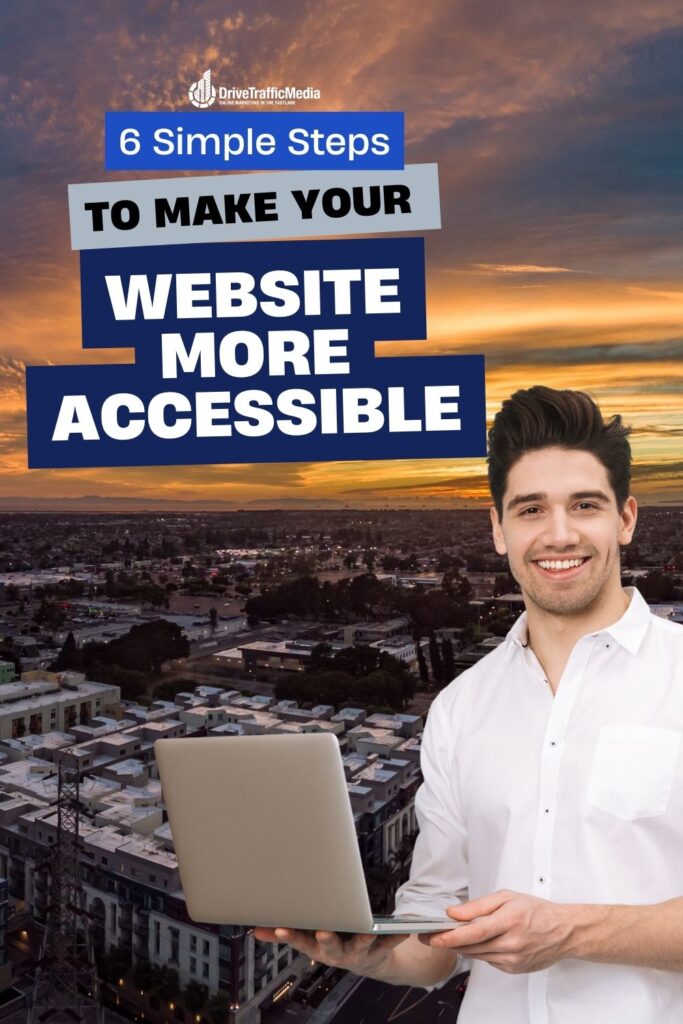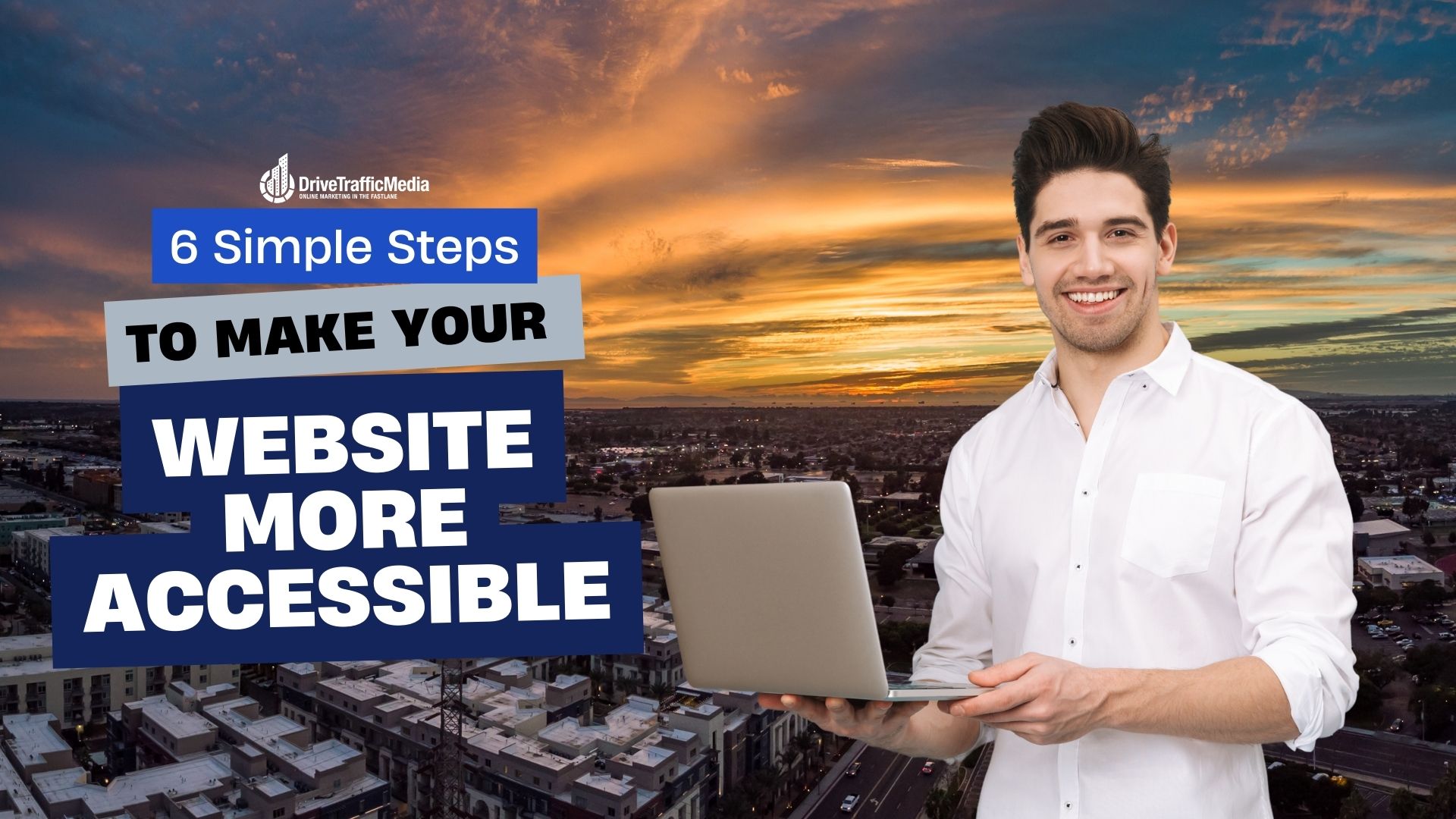With so much of our lives being conducted online, it’s surprising how unbelievably unwelcome websites can still be when it comes to people with disabilities. Orange County web design sometimes has no information for screen readers to read, making it impossible for some to navigate through on the first try, has elements that can trigger seizures and so much more. And if you think about how almost 1 in 5 Americans live with disabilities, this is a huge and gross oversight on the part of web designers.

Browsing the web is a right for all, and web designers need to take measures to make all websites they create are accessible. They can start by following these six easy and simple steps:
1. Let Users Zoom In and Out of Pages and Content
Long gone are the days when you need to hop on a computer to browse the web. Now, the Internet can be accessed through a variety of mediums, including computers, phones, tablets, and even smart watches!
This is something that cannot be adjusted. Like it or not, people are glued to their gadgets. So, you’ll want to have your website do all the adjusting. Firstly, you want to make it easy for people to do the adjusting by letting them zoom in and out with ease. If they want to look at or read something close-up, they should be able to do so.
Another great idea is to have automatic zooms, Let’s say, for example, that customers want to log into their account. When they tap on the log-in button, the website can automatically zoom in on username and password, so all they need to do is input their information.
2. Have a Search Bar That’s Easy to Find
Not everybody has the time to scour through all pages of your website. That’s why search bars are so important—viewers can just search for keywords to find whatever they’re looking for in a jiffy.
You want to make the search bar easily accessible by having it prominently displayed. Having it on a different page than the homepage is just unnecessary work since you’ll have to search for the link to the search bar before landing on the search bar itself! Cut the middle man and just let them search wherever—you’ll notice that many e-commerce websites like Amazon and Etsy always have their search bars on display.
And like automatic zooms, you can also have automatic elements in your search bar! When viewers tap on it, it’s not a reach to think they’re searching for something. So you can zoom in on it and bring up the keyboard automatically.
3. Add Alt Text to All Your Images
Having alt text for all of your images is very helpful to visually-impaired people. Their screen readers can describe an image to them with said alt text so they can better understand your content.
This is especially important if said images aren’t just decorative. For example, if the page talks about how to fold a paper crane, and the image is showing a particularly tricky fold, then you want the alt text to describe how to do the fold too. This lets the visually impaired follow your instructions even though they can’t see them very well.
According to web design Orange County experts, the alt text should preferably be less than 125 characters since screen readers don’t usually read that far ahead—short and sweet.
4. Divide Into Sections and Add Headings
Even people who aren’t visually-impaired hate reading big blocks of text—what more people with vision problems? You want to divide all that information into smaller sections so that it’s easier to read and digest. You also want to use the proper headings that describe each section so that if anybody just skims through your page, they’ll still be able to understand your content.
Indeed, according to a WebAIM survey, 67% of people said they prefer breezing through headers and sub-headers to find what they’re looking for. It’s preferable to use Ctrl + F and reading the page in its entirety.
5. Keep Color Contrast in Mind
You’d be surprised at how important colors are for your web design in Orange County. The color scheme you envision might look great in your head, but that doesn’t mean it’ll translate well on your website. For example, pink and white go well together until you realize that pink text on a white background will be extremely hard to read and straining on the eyes.
To ensure maximum readability at all times, you can use helpful tools such as Use Contrast and Kevin Gutowski that’ll help pick out contrasting colors for you. Alternatively, using black (for light-colored backgrounds) and white (for dark-colored backgrounds) can never go wrong.
6. Format Your Menu and Navigation Well
Your menu and navigation are the maps people use to go through your website, so you want to make sure everything’s labeled nicely and properly. You also want to make it as large as possible so it’s easy to see. After all, a front sign in real life that’s small and hard to read isn’t exactly effective at garnering attention.
To make things easier, you can have their screen readers read out menu options as they hover over them. You should also have the menu links reasonably large so their fingers can easily tap on them without having to zoom in excessively.
They may be little things, but they go a very long way.
Conclusion
The best way to have a fully-accessible website is to enlist in our Orange County web design services. That way, no stone is left unturned, and the website fulfills all requirements on the ADA compliance checklist.
If you’re interested in learning more, please contact Drive Traffic Media today at (949) 800-6990 with any questions and concerns. Consultations and quotes are free! We also offer a variety of other services that can improve your website and boost visibility online.
